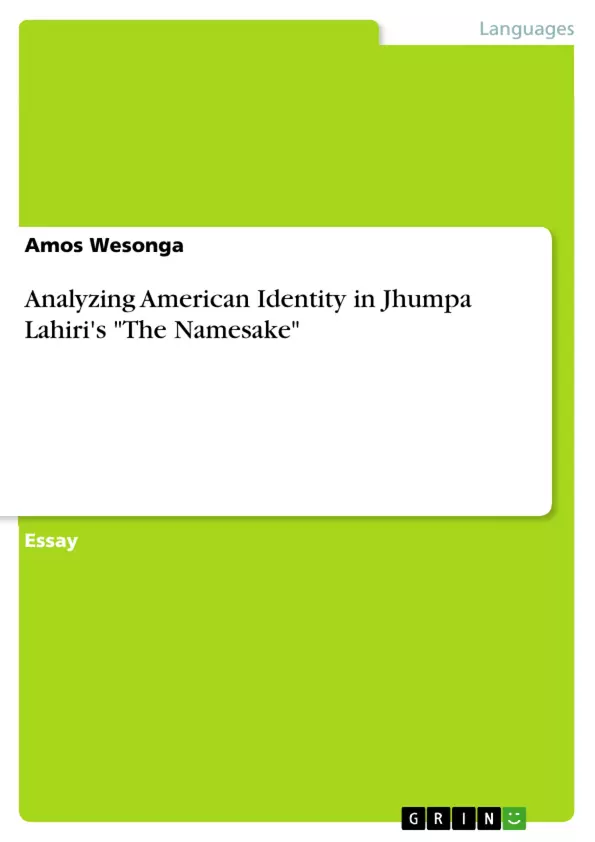"The Namesake" is the first novel from Pulitzer-winner Jhumpa Lahiri, focusing on the division between assimilated American children and Indian migrants. The author analyzes Ganguli family, beginning with Ashoke’s close confrontation with death when he gets through a train crash in his homeland, India. Apparently, this took place when he was reading his cherished novel by Nikolai Gogol. During his stay in the United States of America with his wife, he chooses to name his newborn child Gogol, which was a pet name. Later, this turns out to be his official name, and Gogol is oblivious of the importance behind it. Thus, this piece analyses the American identity in the novel, The Namesake by exploring the role of family, culture, and environment in shaping American identity
Table of Contents
- Family
- Naming
- Death
- Marriage and Dating
- American Food
- Believing in Jesus Christ
- Environment
Objectives and Key Themes
This essay aims to analyze the American identity portrayed in Jhumpa Lahiri's novel, The Namesake, by examining the influence of family, culture, and environment on the characters' assimilation into American society. The author explores the challenges and complexities faced by Indian immigrants as they navigate their new surroundings and seek to establish a sense of belonging in America.
- The impact of family dynamics and cultural traditions on shaping individual identity
- The role of naming practices and their significance in cultural identification
- The influence of cultural differences in death rituals and their impact on assimilation
- The contrasting approaches to marriage and dating in Indian and American cultures
- The influence of socioeconomic factors and environmental differences on identity formation
Chapter Summaries
The essay explores the complexities of American identity through the experiences of two families: the Ganguli family, Indian immigrants, and Maxine's family, a wealthy American family. The author delves into the challenges faced by Gogol, the son of Indian immigrants, in reconciling his Indian heritage with his American upbringing. The essay examines how Gogol's experiences with naming, cultural practices, and the environment impact his sense of belonging in America. Meanwhile, Maxine, raised in a privileged American family, embodies a distinct American identity shaped by her upbringing and social environment. Through these contrasting experiences, the essay highlights the diverse ways in which individuals negotiate their identities in a multicultural society.
Keywords
The essay focuses on key concepts related to American identity, cultural assimilation, and the challenges faced by Indian immigrants in the United States. These concepts include: Indian and American cultural practices, family dynamics, naming conventions, death rituals, marriage and dating, socioeconomic factors, environmental influences, and the complex interplay of cultural values in shaping individual identity.
- Citar trabajo
- Dr. Amos Wesonga (Autor), 2017, Analyzing American Identity in Jhumpa Lahiri's "The Namesake", Múnich, GRIN Verlag, https://www.grin.com/document/441282



